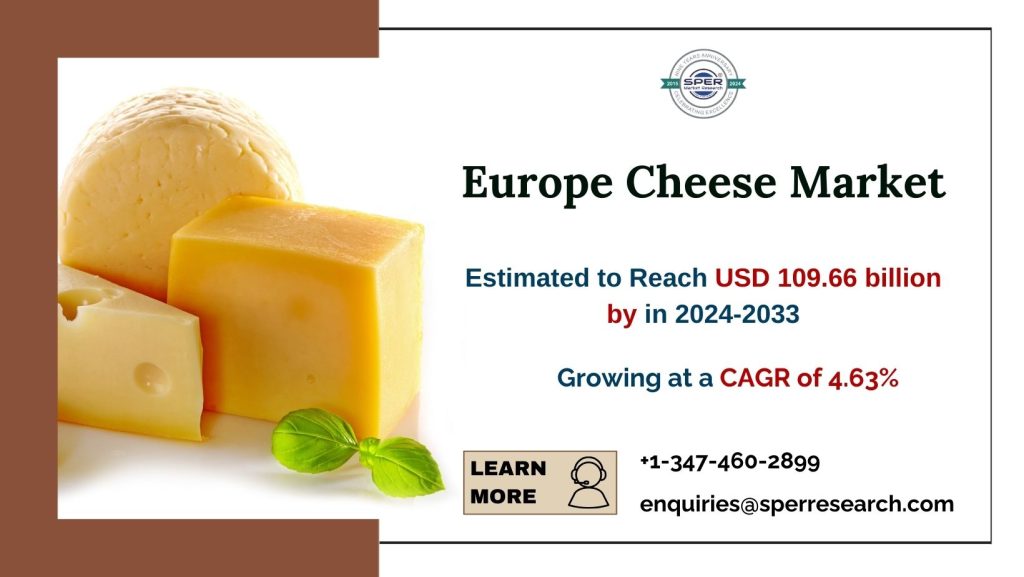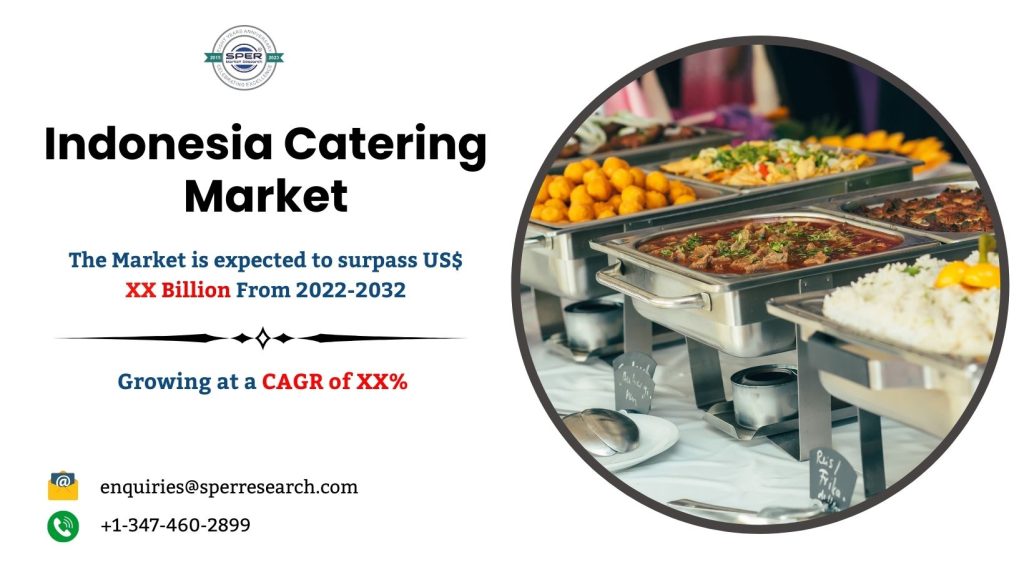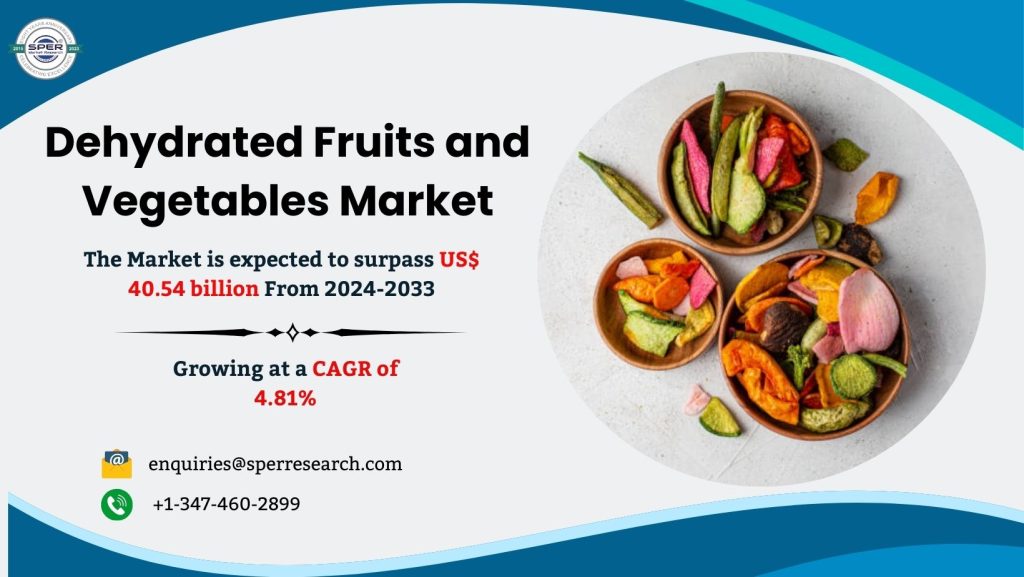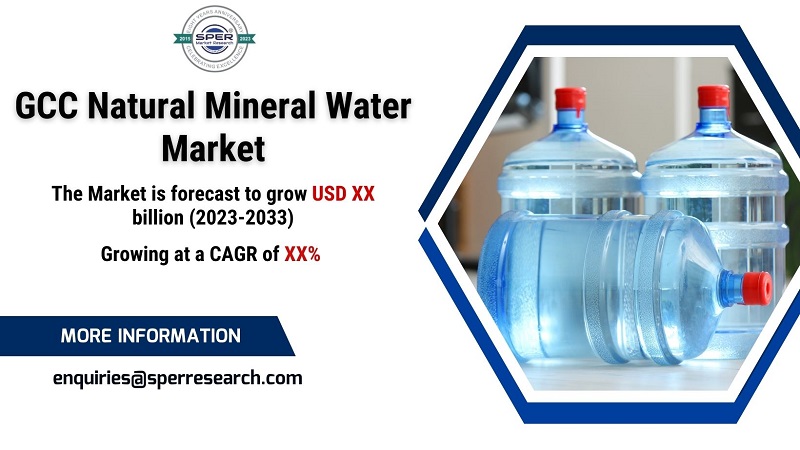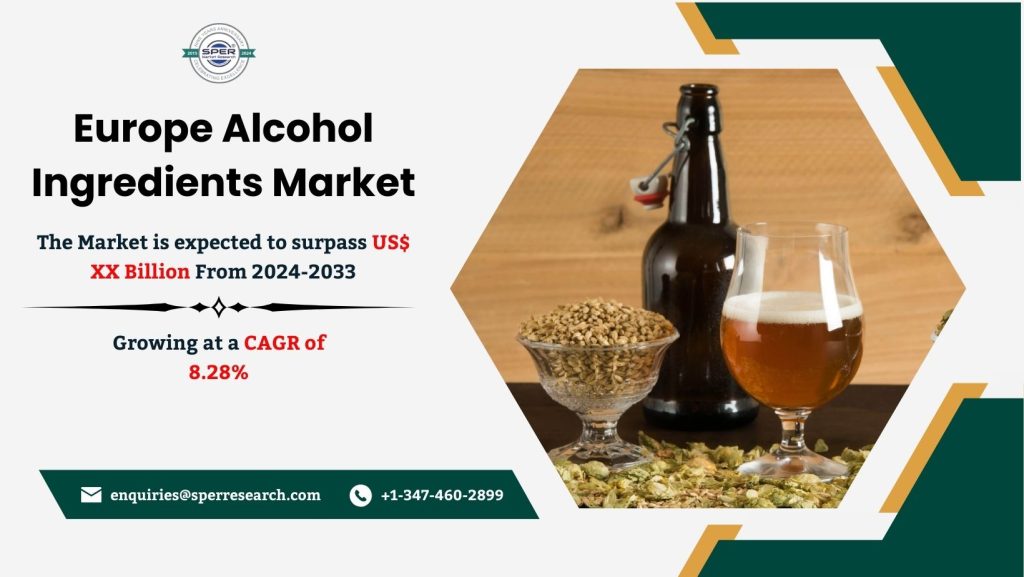Cheese is a type of dairy product made by curdling milk proteins, mostly casein. Usually, rennet or acid is added to milk in order to separate the solids from the liquids (whey). To create different kinds of cheese, these curds are then matured, processed, and occasionally flavoured. Depending on the milk source (cow, goat, or sheep), the production technique, and the ageing period, cheese can have a wide range of textures, flavours, and colours. Blue cheese, brie, mozzarella, and cheddar are common varieties of cheese, and each has unique qualities. A rich source of calcium, protein, and other nutrients, cheese can be employed in a variety of culinary applications, making it a flexible component of both classic and contemporary recipes.
According to SPER Market Research, ‘Europe Cheese Market Size- By Product, By Source, By Type, By Product, By Distribution Channel, By Format- Regional Outlook, Competitive Strategies and Segment Forecast to 2033’ states that Europe Cheese Market is estimated to reach USD 109.66 billion by 2033 with a CAGR of 4.63%.
The growing demand for various product tastes in regional cuisines is the main factor propelling the cheese industry in Europe. In addition, the region’s growing demand for genuine regional cheese is fuelling the market’s expansion. Additionally, the market is expanding due to the quick premiumization of cheese by many local manufacturers. The market is growing as a result of increased snacking tendencies, a greater emphasis on organic products, growing health consciousness, and the growing food service industry. Additionally, the demand for cheese in the European market is rising as a result of the growing consumer interest in ethically and sustainably produced food products, which is impacting cheese production processes with a focus on organic and responsibly sourced components.
Request For Free Sample Report @ https://www.sperresearch.com/report-store/europe-cheese-market.aspx?sample=1
Price instability brought on by shifting milk prices has a direct impact on the costs of making cheese, which lowers overall profitability. Unexpected rises in milk prices may raise production costs and force cheese product pricing changes to preserve profitability, which would reduce consumer affordability and market competitiveness. Additionally, cheese products present inventory management issues since they must be stored carefully to preserve quality and safety. Their short shelf life highlights the necessity of effective rotation and oversight. Inadequate storage conditions can cause spoiling, which costs manufacturers and retailers money and causes waste. Therefore, in order to preserve profitability and market presence, cheese makers must control storage and price volatility.
The COVID-19 epidemic had a major effect on the dairy business in Europe by upsetting supply systems and changing consumer habits. Lockdowns initially reduced demand from the foodservice and restaurant industries, but as consumers started cooking at home, retail sales skyrocketed. Labour shortages and health requirements made it difficult for producers to source raw materials and sustain production. Many cheese producers responded by expanding their product lines and boosting internet sales. Additionally, the epidemic increased health consciousness, which increased demand for high-end, organic, and functional cheeses. The market started to rebound when limitations were loosened, but long-term consequences include persistent changes in consumer preferences and a greater emphasis on sustainability and local sourcing in the cheese sector.
France dominated the Europe Cheese Market due to its diverse flavour. Some of the key players are- Arla Foods amba, Bel Group, Egidio Galbani SRL, Granarolo SpA, Groupe Lactalis.
Our in-depth analysis of the Europe Cheese Market includes the following segments:
| By Source: |
|
| By Type: |
|
| By Product: |
|
| By Distribution Channel: |
|
| By Format: |
|
For More Information, refer to below link:-
Related Reports:
Follow Us –
LinkedIn | Instagram | Facebook | Twitter
Contact Us:
Sara Lopes, Business Consultant – U.S.A.
SPER Market Research
+1-347-460-2899
